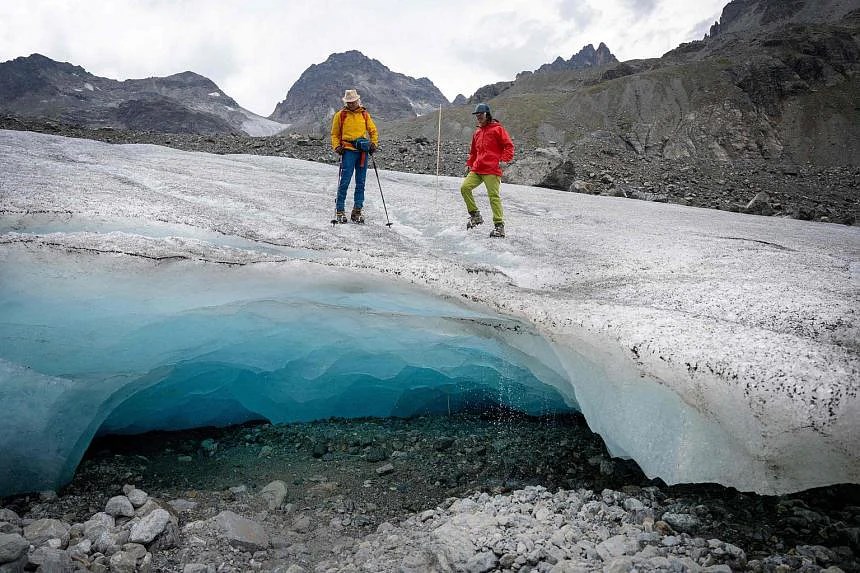Austrian scientists race to reveal melting glaciers' secrets
Ice and snow are melting at unprecedented rates and Austrian scientists are racing to save valuable scientific data
-

Austrian scientists race to reveal melting glaciers' secrets.
Scientist Andrea Fischer, who is jumping from rock to rock over a brook produced by Austria's Jamtal glacier, is concerned that valuable scientific data would be irreparably lost as the snow and ice melt quicker than ever.
"I couldn't have imagined that it would ever melt as dramatically as this summer... Our 'archive' is melting away," the glaciologist said.
Fischer, vice head of the Austrian Academy of Sciences' Institute for Interdisciplinary Mountain Research, has spent more than 20 years searching for the oldest regions of ice in Jamtal and four other Alpine glaciers across Austria's highest summits.
Such ice formations represent a unique time capsule dating back thousands of years for scientists seeking to reconstruct the Earth's climate in the distant past.
Read next: Snow at Austrian Alps melting earlier than ever before
According to Fischer, glaciers contain a unique treasure mine of data because as they expanded, the ice encapsulated twigs and leaves, which can now be carbon-dated.
Scientists can deduce when ice accumulated during colder periods or when milder conditions led it to melt based on the age of such material and the depth at which it was discovered.
However, glaciers are swiftly melting, including one in the remote and narrow Jamtal valley, not far from where tourists discovered the magnificently preserved 5,300-year-old mummy of Oetzi, the Iceman, in the 1990s.
According to the International Commission for the Protection of the Alps, temperatures in Europe's highest mountains have risen by about two degrees Celsius in the last 120 years, nearly doubling the global average (CIPRA).
The 4,000 glaciers in the Alps have since become one of the most visible manifestations of global warming.
Disappear completely
According to Fischer, the Jamtal glacier has been losing roughly one meter (three feet) of its surface each year, but this year it has already lost more than a meter.
"And we've got at least two months of summer left... where the glacier is entirely exposed to the sun," she warned.
Snow typically shields glacier ice from the sun until September, but the little snow that fell last winter had already melted by early July.
Read next: Global heating is turning white Alps green, study finds
"This year is outrageous compared to the average of the past 6,000 years," Fischer said.
"If this continues, in five years, Jamtal glacier won't be a glacier anymore."
By the end of the summer, Fischer anticipates that nearly seven meters of depth – or roughly 300 years of climatic "archives" – will have melted off the surface.
'My heart is bleeding'
The Alpine Club is already conducting a "Goodbye, glacier!" tour through the once-ice-filled valley in Galtuer, the nearest village to Jamtal with 870 residents who are primarily dependent on tourism, to raise awareness about the effects of climate change.
Scientists discovered that where the ice has retreated, roughly 20 types of plants, predominantly mosses, had taken over within three years. According to Fischer, larches are growing in some regions. Today, the ice is a 90-minute hike away.

 3 Min Read
3 Min Read








